First, I’d like to express my gratitude to the authors of the following articles or posts online that helped me to prepare my trip :
- Edward Adrian-Wallace’s Off The Beaten Track Travel
- User zachleigh’s post on Lonely Planet Forum
- Laszlo Wagner’s excellent website East-Indonesia
This article gives general advices, for day-to-day report of the trip to Angguruk, check this article.
Why come to the Baliem Valley ?
Baliem Valley is an isolated area nested in the mountains of Papua province. As of 2017, it is still only reachable by plane.
The valley gets its name from the Baliem river that flows through it. It’s about 100km long and 20km large.
The valley is the most populated area of the Papua highlands (see Indonesian geography). It’s the starting point of different itineraries in and out of the valley, leading you to to numerous small villages inhabited by people from different close ethnical groups. The most famous are Dani, Yali, Lani but some other can be found in more secluded area like the Mek.
About authenticity
I recommend you to read the first paragraph of this article on East-Indonesia. I’m gonna just quote the last sentence but go read the rest (it’s only a couple of lines) :
So don’t dream of discovering untouched primitives, just come here to enjoy the splendid scenery, the remoteness, and the real, present-day culture, and you are likely to return home with lasting memories
User zachleigh on Lonely Planet Forum had also some great words (again go read the full last paragraph of his post) :
Walk around by yourself and talk to the people and you will find an authentic culture. Come here for a few days looking for cannibals and you will probably leave disappointed.
The Baliem valley festival is held near Wamena every year in July. Villagers will put on war paints and mock fights. If you are only chasing shots of people naked, painted and with bones in the nose, it’s your best chance. You can expect something like this.
For special official guests, they might set up a welcoming ceremony with some traditional outfit. I saw those guys at Wamena airport, they were waiting for a newly appointed official in the governor office.
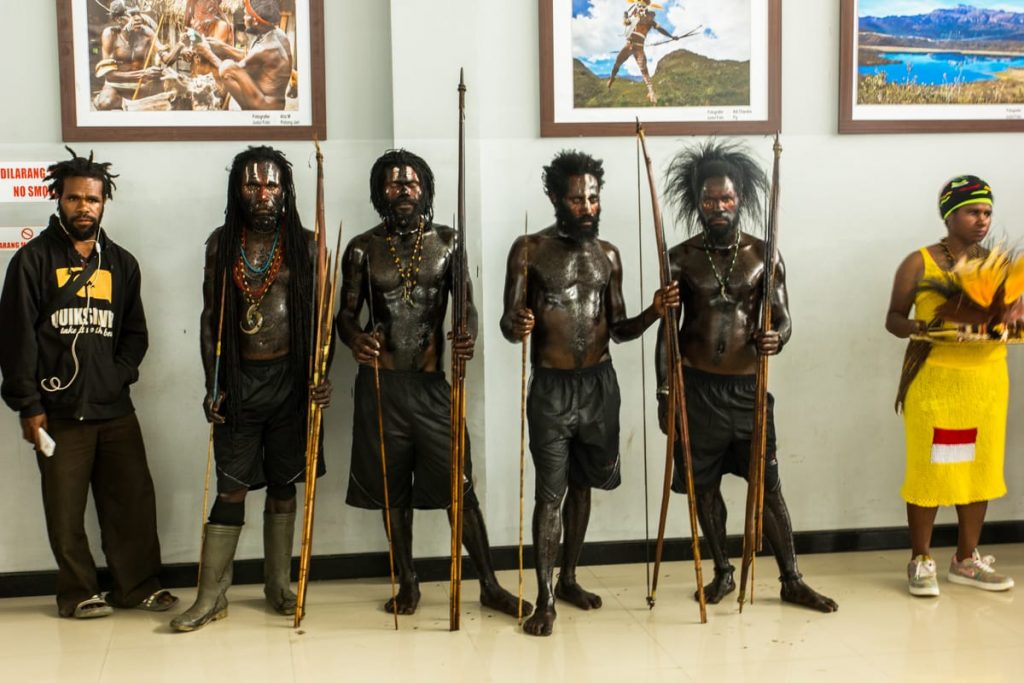
Welcoming ceremony for a government official. The girl on the right is carrying a traditional hat with bird feather.
Where to go ?
The Baliem valley is a very large area and you would need weeks to explore it fully (like visiting Lake Habema, or the salt mines in the West).
Nowadays, most of the modest flow of annual visitors is visiting the villages located in the eastern end of the valley, visiting Hitugi, Kiroma, Userem … Very few ventures actually more than 2 days away from Wamena.
This part of the valley is still fully off-road and can only be explored on foot using rugged trails. It doesn’t get “more authentic” the further you go, simply different.
I reached Angguruk in 6 days of tough hiking, it was one of the most rewarding trip I did in Indonesia
Northern Baliem valley
Road network is much more developed in the northern part of Baliem valley, as a consequence I understand this area is less isolated.
It doesn’t mean it’s less interesting. Just going a few hours to Aikima I could noticed significant differences with the Southern villages I just visited the day before.
The Japanese guy running Papua.com Internet cafe sells a approximative maps of the area (North and South) for 7,000Rp.
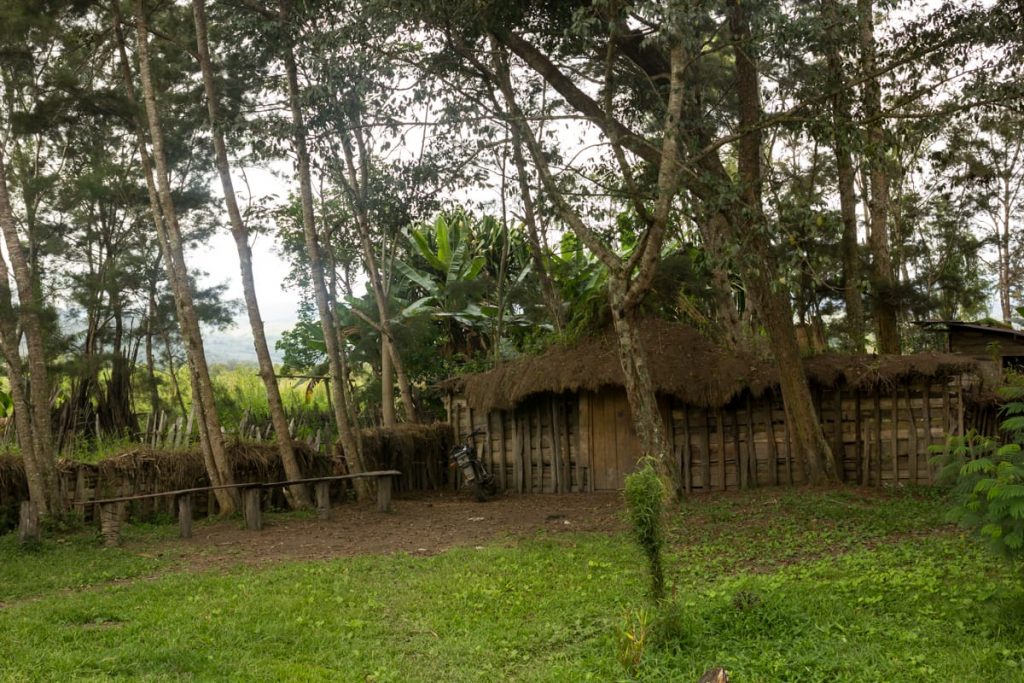
Looks like villages are often fenced North of Wamena 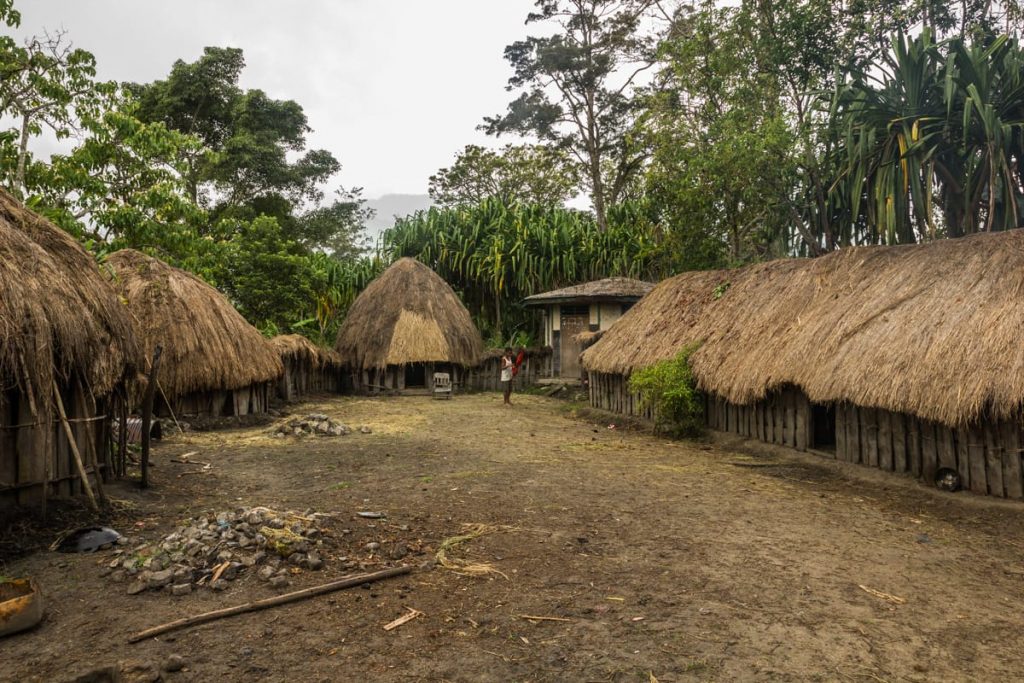
Aikima village – The layout of the village is very different from the one in the South. Honai have a second floor under the roof. 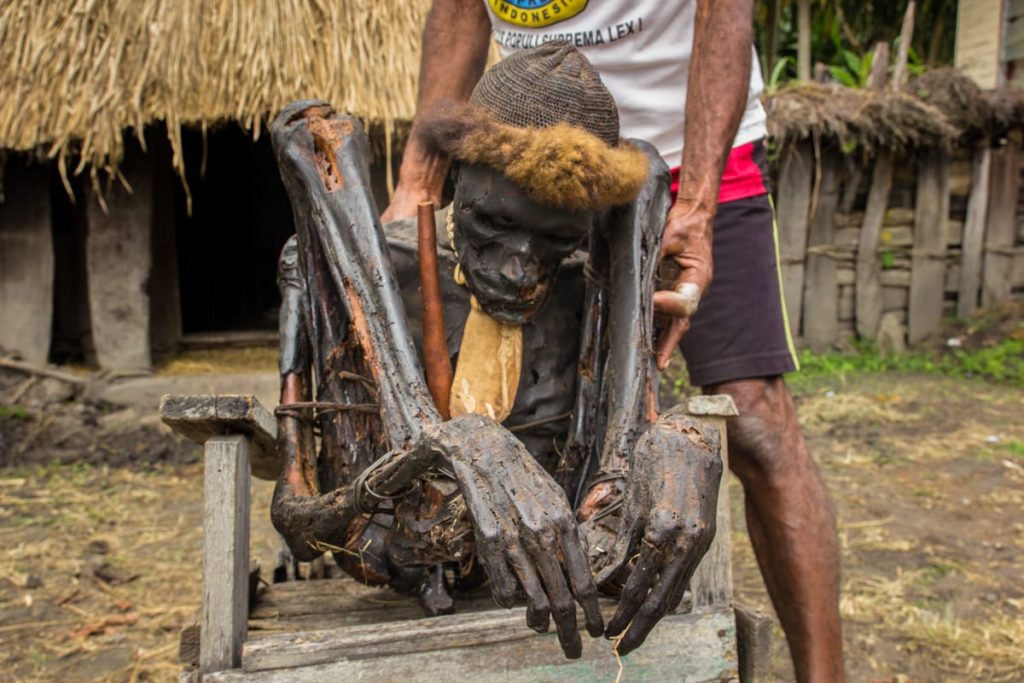
The mummy kept in Aikima village
A couple of ideas I had written down :
- You can take public transport to reach the cities of Tiom or Karubaga North-West of Wamena and then go on trek in the Lani villages.
- You can trek in the Dani villages North of Wamena (including the one where they keep mummy like Sampaima or Wo’ogi
Suggested itineraries
Based on my experience in the South, I can suggest a couple of itinerary. There are of course many others options and no one know better than the locals.
I advise you to take into consideration what I call the ‘Papua factor’ every time you discuss with someone about the time necessary to go to some place.
If someone tells you you need 5 hours to go from point A to point B, always also ask how long they need to cover a distance you covered by yourself. By doing so you can approximate how fast this person walks compared to yourself and so know the real time you need to cover distance A-B.
My itinerary : Wamena to Angguruk (one way)
This I what I did in June 2017. I posted a comprehensive report in this article. We walked at a good pace and didn’t take much rest.
Day 1 : from Kurima to Hitugi (2h50 walking).
Day 2 : from Hitugi to Yogosem (3h40 walking)
Day 3 : from Yogosem to Wonggul (7h20 walking)
Day 4 : from Wonggul to Peliam (9h50 walking)
Day 5 : from Peliam to Angguruk (7h45 walking)
Day 6 : AMA plane from Angguruk to Wamena (30 minutes).
My original plan was to go back to Wamena walking from Angguruk to Ninia, Soba and so on …
But I was tired of walking in the mud and sleeping on the floor. There was a flight leaving on Day 6 and it wasn’t very clear when would the next flight come to Angguruk. So I decided to take it.
With proper gear I guess I would have had continued either to Kosarek either back to Wamena as planned.
A guide is mandatory from Kiroma to Angguruk
A more relaxed 6-days itinerary : Wamena-Wesegalep loop
I got this report from friends who did this with a guide. Given the trail is well worn you can do it by yourself provided that you have a basic level in Indonesian as explained above.
I think they took it easier than me because I covered the Kurima – Ugem distance in less than 2 hours.
Day 1 : Sogokmo (before Kurima) – Kurima – Kilise (2h30 walking).
Day 2 : Kilise – Kuligima (3h walking)
Day 3 : Kuligima – Wesegalep (4h30 walking)
Day 4 : Wesegalep – Wuserem (4h walking)
Day 5 : Wuserem – Ugem (7h walking)
Day 6 : Ugem – Kurima (2h30 walking
Someone a left a useful comment below this articles with a more accurate map of this specific area as well as trip report, feel free to also read it (as well as this)
Going solo
Find food and accomodation in the villages
For food you have 3 options :
- Bring your own from Wamena (not necessary)
- Buy it on the way in the small shops (ask for kios) or directly to the villagers (ubi for instance). I advise that you always keep enough food for one day in your bag (instant noodles, ubi or rice) in case you cannot find food in a particular village. In Indonesia cooked rice is called nasi but uncooked rice is called beras.
- Ask the villagers to sell you a meal (it’s possible most of the time but don’t ask for it at 8pm !).
Immediately after you arrive in the village you intend to spend the night at, ask around about where you can stay. In my case they always had a room somewhere for guests. Beware, mattress and blankets are not provided most of the time !
Ask your hosts what are your options to eat. They will tell you if they can provide you with a meal or not. If not inquire if it’s possible to buy food in the village and then where to cook it.
I basically ate the following every day :
- Biscuits I bought or cooked ubi from the previous day in the morning
- Cooked ubi at lunch
- Rice with cooked ubi leaves and noodles at night
Some prices as of July 2017:
- Enough rice for a 3 people meal : 4,000Rp
- One pack of instant noodles : 5’000-8’000Rp
- Passion fruits : 5’000Rp for 10 pieces
- Sardin and tomato can : 20’000Rp
What about water ?
Villages always have a source of clear water available. From Hitugi, I continued with a villager. He knew where to find springs and streams on the way. We never carried more than 1,5L of water with us.
What should I pack ?
- A empty bottle or gourd to carry water
- A sleeping bag for the night (I had one that is not recommended below 10°C and I was fine even the night I spend outside next to the fire).
- Money to pay for food and accommodation (take more than necessary just in case, in Angguruk I got told about a guy who had to beg for food because he waited for the plane for days and was out of cash).
- Flashlight for the night
- Something to protect your bag and yourself if it rains
A couple of stuff I wish I brought :
- Shoes to walk in the mud ! (I ruined my feet doing the trek with New Balance sneakers which was a stupidity)
- A sleeping mattress
- Seasoning for food (soy sauce, salt …)
Gifts
Giving gifts to your hosts and villagers is a real thing in this region (as I have described in the trip report, I saw my guides sharing or being shared rolled cigarettes and ubi with people we often met not more than 2 minutes). Adults almost invariably asked for cigarettes (rokok) and kids for gula (litteraly “sugar” but in this context “candy”).
Even with good commands of Indonesian, I found local highlanders rather hard to approach, cigarettes made a truly welcoming ice-breaker. Unfortunately cigarette butts ends up in the nature (as well as candy wraps if you bring any). I had a couple of lighters as well as pens for kids but givint them out almost led to a brawl. I’m neither a coffee or tea drinker but I guess you would have to share that too.
Retrospectively a great gift would have been a dynamo torch but you can be sure that you will always be watched by 20 pair of eyes. Give something everyone is going to claim their share too, so small and easily divisable gifts are a must
Hiring a guide
You need to consider 2 things :
- Your commands of the Indonesian language
- How far you intend to go
If you don’t want to go too far (like Kiroma or Wesegalep in the South), then you can find your own way alone (the trails are usually well-worn) provided that you know how to ask in Indonesian :
- What’s the direction of this
- Where can I sleep and the price for the accomodation
- Can someone cook for me ? Where can I cook ?
When it comes to reach a very basic conversational level, Indonesian is definetly one of the easiest language in the world. Bring a phrasebook (the Lonely Planet’s is quite good) and you will be fine.
Yet, by doing so you wouldn’t be able to have any proper conversation with villagers. I truly enjoyed the conversations we had with my guide Yahuda on the trail, about how he was dating a girl from another village when he was young or his hope for the future of its children. I tried to describe life in the city in return.
How much to pay for the guide ?
Reputable (or less reputable) agency with a presence online often quote extravagant rates (like $100 or $150 per day).
Book a flight from Jayapura to Wamena and look for a guide directly in Wamena if you are looking for one.
Friends of mine made a loop Kurima > Kilise >Kuligima > Wesagelep > Wusurem > Ugem > Kurima. It costed them 12M for 4 people and 6 days with an English speaking guide.
Otherwise, if you organise everything by yourself it should cost you the following :
- Accommodation : 100,000Rp per night/per person (I was alone so I don’t if you can have a discount for a group)
- Food : no more than 50,000Rp per day
Hiring a guide on the fly in a village is in my opinion the best solution, but they won’t know any word of English. I guess you could hire someone for 100’000Rp if he only has to show you the way to the next village.
I had 150’000Rp/day in mind which I think would be a decent wage for a day of work. We agreed to increase it to 200’000Rp/day with Yahuda to go from Hitugi to Angguruk because he was supposed to return alone to Hitugi.
When we reached Angguruk, I was pretty happy we did it and I could only praise his honnesty and kindness. I gave him 1’000’000Rp instead of 800’000Rp for the 4 days of work. In the end, I added 400’000Rp so that he could pay a seat in the flight for Wamena to Angguruk along myself. I left to him the decision whether he prefered to fly or walk back with the extra money.
He choosed to fly. When asked what he would do with the remaining 800’000Rp he told me he would buy rice
Be very clear with your guide about the following point :
- Insist to pay by yourself food and accommodation
- Where and when do you intend to leave him
Chartering a plane
All Missionary Airlines operate flights to many villages in the valley. Their office is at the very end of the airport.
I found easily a plane back from Angguruk (the next day of my arrival). According to the guy there, there is a flight everyday from Monday to Friday. But at Wamena they told me the schedule is more irregular. Planes bringing cargo simply pick up passengers on their way back. The ticket costs 600,000Rp per passengers, seat is not guaranteed.
Flights from Kosarek are much more scarce for instance.
Prices for charter flights are as following (for 9 passengers or 800kg of cargo), one way :
- Wamena – Angguruk or Pronggoli : 14’000’000Rp
- Wamena – Kosarek or Walma : 16’000’000Rp
- Wamena – Nalca : 22’000’000Rp
Getting a seat on a flight leaving from Wamena is very difficult because flight usually leave with cargo and come back with passengers. Hence the guy chartering the flight is going to load up as much cargo as possible, leaving no seat for eventual passenger. There is no phone signal in the villages, the only way of communication is radio.
So it’s better to walk first and then fly, the problem is that you don’t know exactly how long you are going to wait for the return flight. Make sure you have enough cash with you
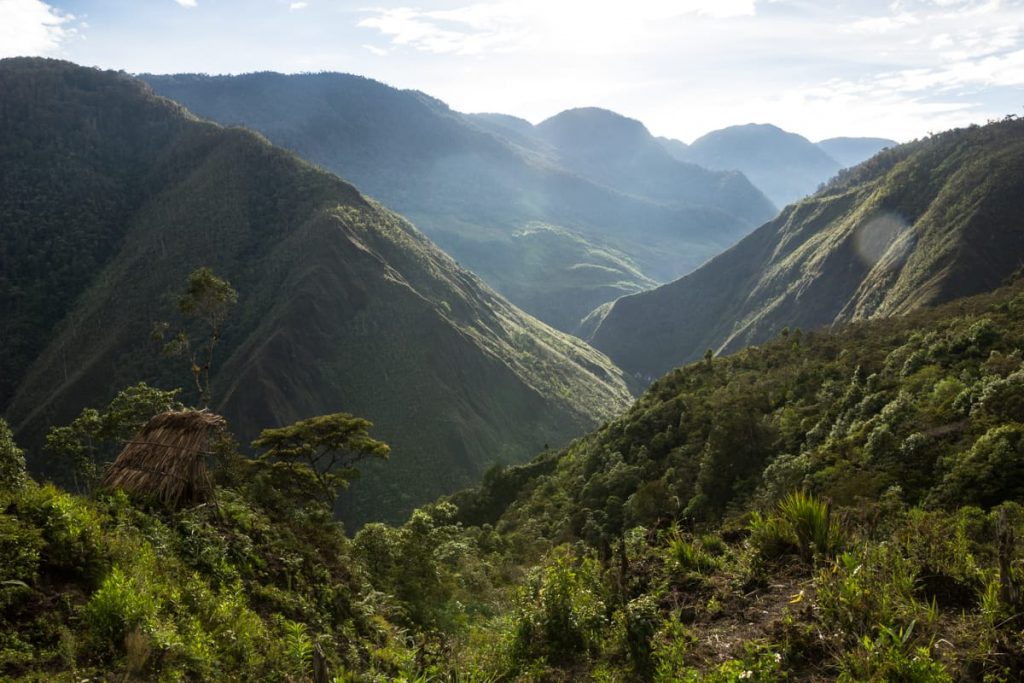
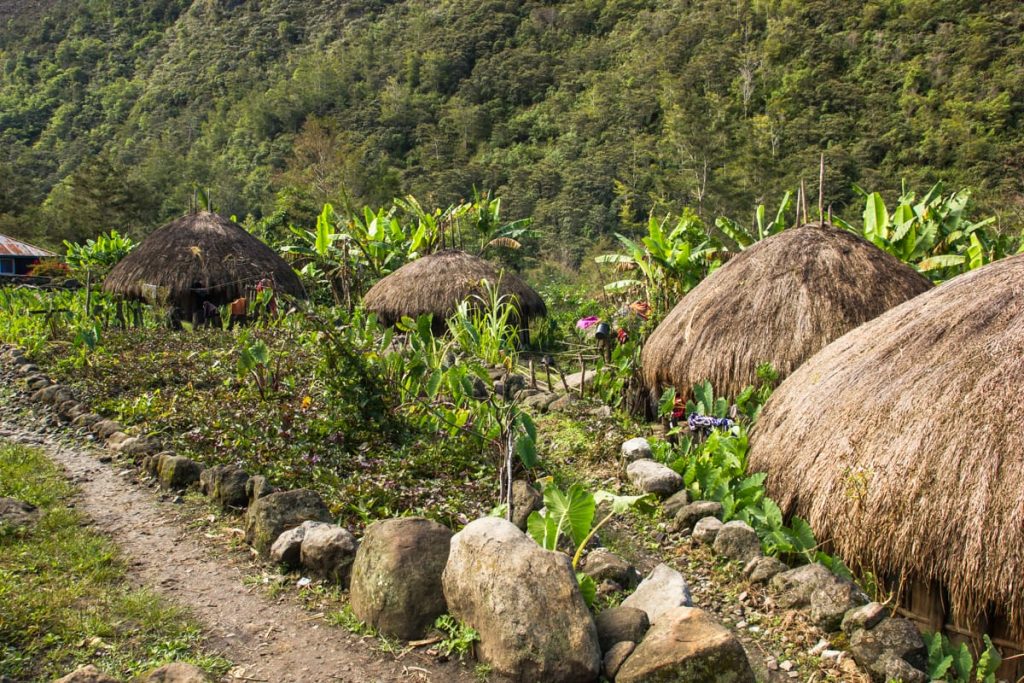
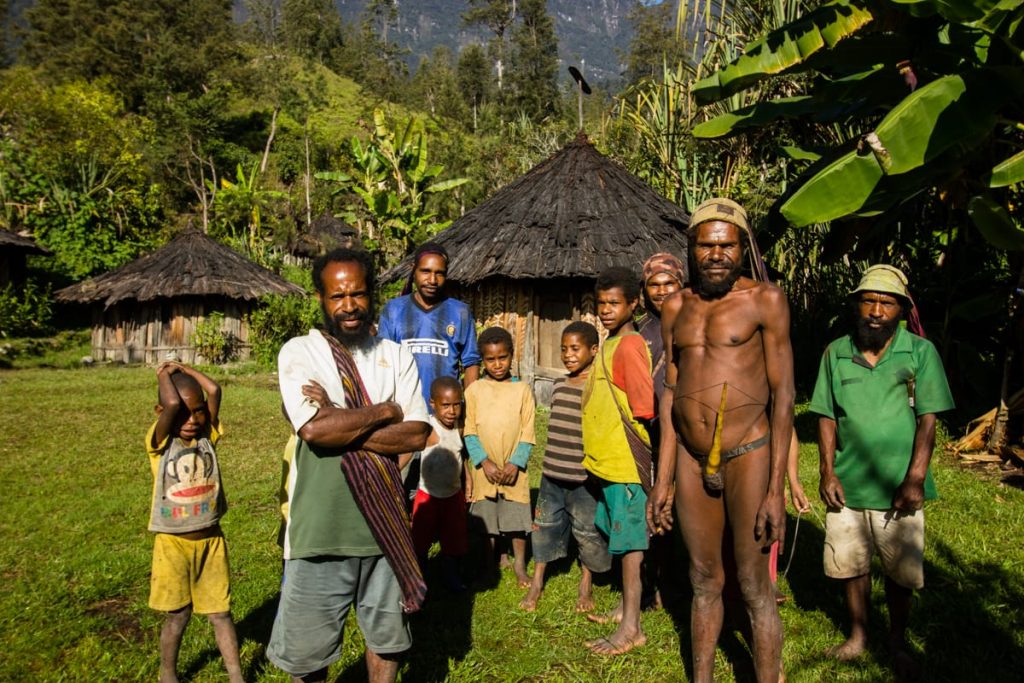
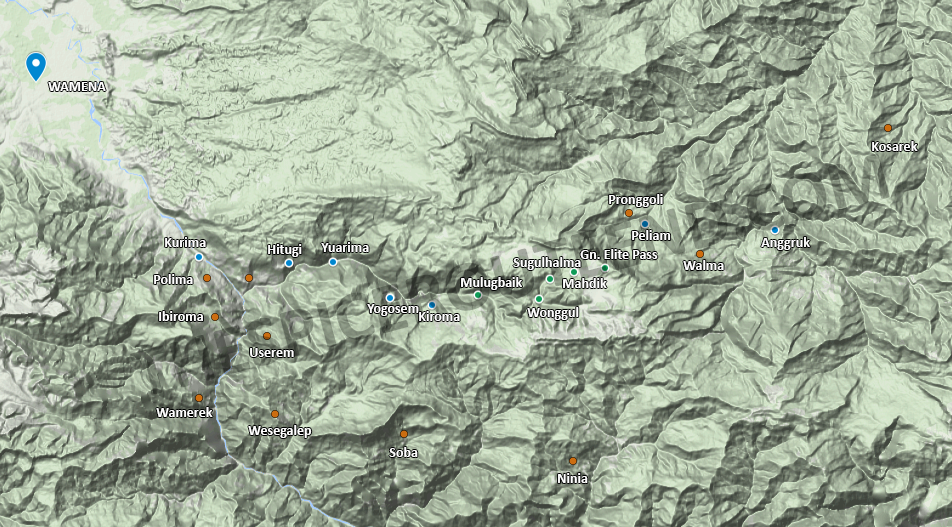
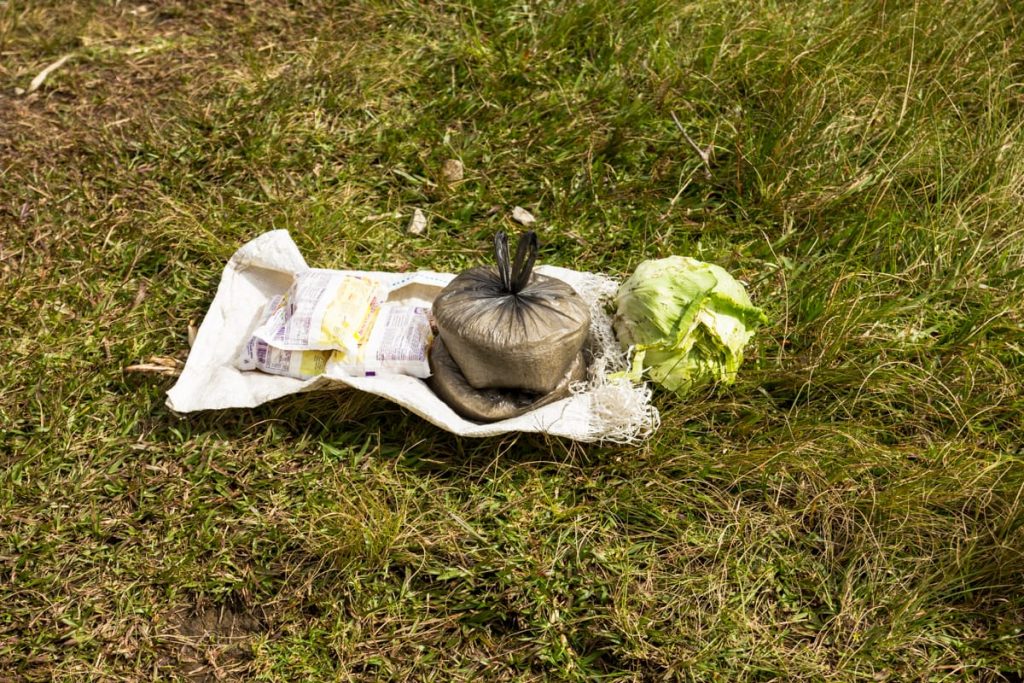
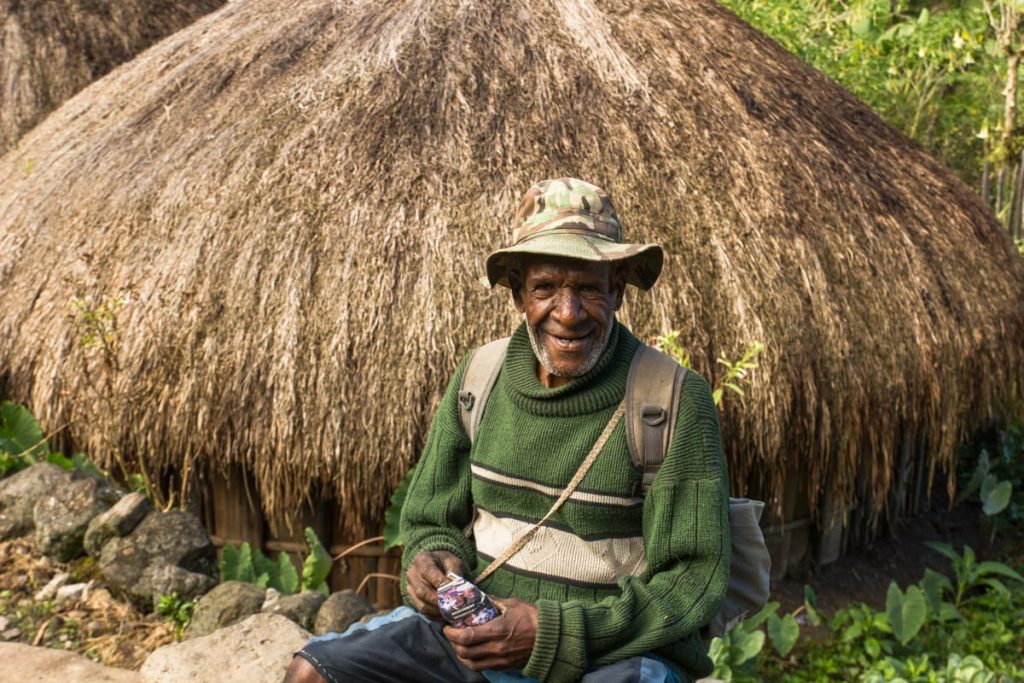
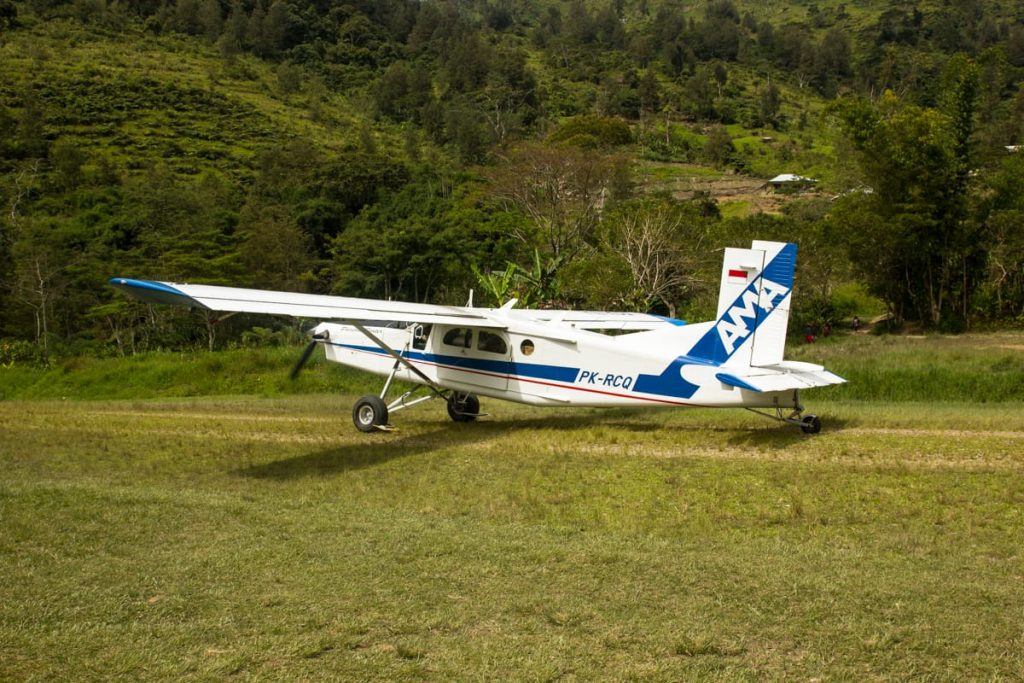
You made it to Ungurruk, good for you! We had to stop a Sobharam because the trail was Tidak Bissa, and that’s from the locals! We loved it, what a great experience it was, though definitely on the challenging side. Both physically and mentally. Which guide did you go with? (Sorry I can’t seem to see his name from your post)
Hi, thanks for your comments ! I didn’t take any guide or porter. I hired a villager in Hitugi to guide me through Mt Elite.
It’s by far cheaper but I only recommend this solution to those with good commands of Indonesian.
Book flights well in advance. I was around mid january in Baliem Valley. Flights where booked out for 3 days in advance (both direction).
Take a GPS because the way to wegesalep is difficult (Inside jungle). Prices 100.000k and only Ubi as meals.
Hi, I would like to take the route from Pugima to Anggruk. Could you please give me the name of your guide, I mean, the one in the picture… My indonesian is still not so good…
Thanks for sharing!
Hi, the guy on picture is not a professional guide but a villager from Hitugi that I hired to show me the way. He speaks absolutely no English but rather good Indonesian. Quite nice and honest man nonetheless.
Ask for Yahuda in Hitugi, but again he’s not a guide so he might be busy and I’m not sure at all he will be willing to take a non-Indonesian speaker.
Hi Elliot, we just returned from a 6-day trek in the Baliem Valley. Fantastic trip. Great blog info here, thanks! We posted our similar experiences here: trekkinginthebaliemvalley.blogspot.com
Again, thanks for the info, came in handy!
Rob
Hi Rob,
Glad it helps, this area is very special indeed. Thanks for your own info regarding the itinerary to Wesegalep, pretty useful too.
Elliot
Hi,
I am traveling from India to Indonesia in December this year and want to do the journey from Wamena to Anggruk. Thanks for your detailed notes. Very very helpful. I have a question though- the charter flights rate from Wamena to Anggruk is not per person right?!? Otherwise 14,000,000Rp is quite expensive. Please help me understand. Thanks much.
Hi Nirmala, no per person the price was 600’000Rp one way back in July 2017. But beware because flights are not daily. I posted a detailed report of the trip to Angguruk in another article, check it out http://thespicerouteend.com/south-baliem-valley-from-wamena-to-angguruk/
I did this hike from Wamena to Angguruk as a solo female traveler in 2016. It took 7 days to arrive there. It was the most interesting trek of my life. I arrived to Wamena and I camped at the police station in Kurima at the first night. I had breakfast with the soldiers there and than I started the hike to Kiroma. The path is seeable and it is always possible to ask the locals. I learnt indonesian for 1,5 month before arriving to the Baliem valley and it was really very helpful to communicate with the papuas. On my way I camped in the villages many times but I always asked the people if it would be okay for them. They said yes. I didn’t take any food with me, I always ate some sweet potatoes and noodle. I paid for a “porter” (guide) from Kiroma, I found one in this village and I paid 150 000 per day incl food. The hike in the jungle was hard and muddy but finally I arrived to Angguruk via the Gunung Elit pass…